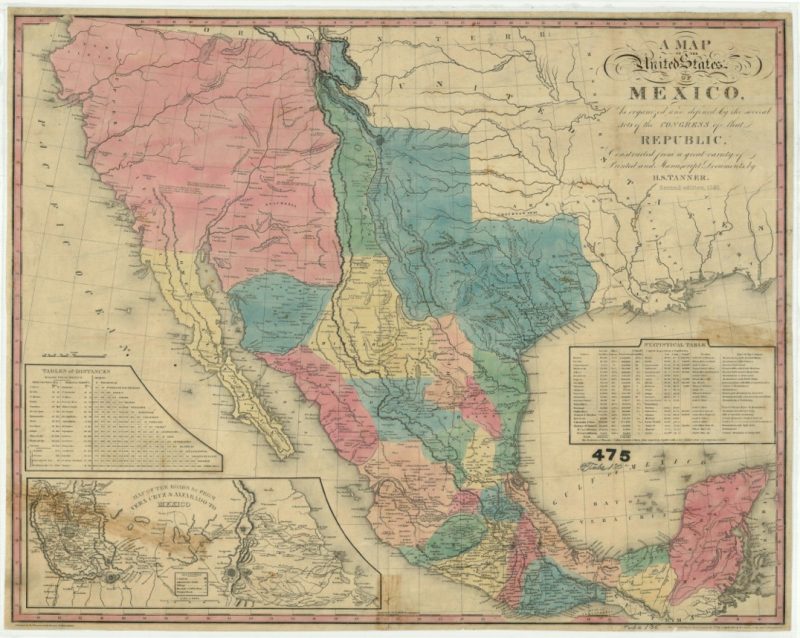A very weird email to start the day with. FamilySearch has the capability to attach news events to biographies in their genealogy data. Usually it’s about attaching US or British census data or Catholic Church baptismal or marriage data. Stuff like that.
Today it was a news report about a murder.
Today it was this story from the San Francisco Call: (San Francisco Call, Volume 82, Number 18, 18 June 1897).
SHOT AT NIGHT FROM AMBUSH
Murder in the Quiet Village of San Juan Capistrano.
Outcome of a Long-Standing Enmity Between Two Mexicans.
The Victim a Peaceable Saloon-Keeper
His Assassin a Bad Character.
SANTA ANA, Cal., June 17.— A coldblooded murder was perpetrated at the old mission town of San Juan Capistrano last night, when Dolores Garcia, a saloonkeeper, who has resided there for many years, fell from a bullet of an ambushed assassin. Manuel Fellos, a determined enemy of the murdered man, was arrested a few minutes after the crime by Constable R. O. Pryor and brought to Santa Ana this afternoon by Sheriff Nichols and Deputy Sheriff Landell. Garcia was a Castilian, 60 years of age, and the father of seven or eight children. He married his second wife, Refugio Serrano, two years ago, had lived in Capistrano over twenty years and had the reputation of being an honest, peaceable citizen. Fellos is a tall, sinister-looking half-Indian, with a bushy black beard and general repulsive appearance. He is familiarly known at Capistrano as Mestiza, is one of the best shots in the county and once killed a vaquero, being iviih the Wild West show at the Midwinter Fair. There has been bad blood between the two lor a long time, Fellos having frequently threatened Garcia, and about ten months ago he struck Garcia over the head with a revolver, for which he was fined $200 by Superior Judge Towner. Since that time Garcia has never allowed him to enter his house. Last night about 9 o’clock as Garcia was closing his saloon a snot was fired from directly across the street and a rifle ball entered the unfortunate man’s mouth, passing out through the back of the head, killing turn instantly. He fell backward into the room, where his body was found a few minutes later by the crowd attracted by the shot. Shortly after the shooting Fellos appeared at the house of Constancion de Cruz, across a ravine from town, and said: “Well, I have killed Garcia–have lifted him off the earth.” He had his rifle with him and was advised by De Cruz to throw it into a ravine, where it was found this morning with an empty shell in the barrel. News of the murder spread through the small hamlet like wildfire, and the major portion of the population soon gathered about the body of the dead man discussing the startling affair. A few minutes after leaving De Cruz’s place Fellos suddenly rode into this throng and asked what the trouble was. He bad evidently circled the town and had been drawn back to the scene of his crime through nervousness or fascination. The general sentiment of the crowd had been that Fellos was the murderer, and Constable Pryor immediately placed him under arrest. On his saddle was found a box or cartridges purchased about 8 o’clock at one of the village stores. The bullet which killed Garcia passed through the rear window of his store and through the roof of an old adobe building beyond, where it was found on the floor. It corresponded with the cartridges carried by Fellos, and his rifle was found in the ravine and fully identified as of the same caliber. Fellos protested his innocence after being arrested and at the Coroner’s inquest held this afternoon, but ample evidence was produced to justify holding him, and there is little doubt of his guilt. He is well-behaved when sober, but has always been considered dangerous when under the influence of liquor. He was fined $250 in Los Angeles two years ago for assault.
A lurid tale.
The news story also goes to the trouble to describe the victim as “Castilian”–Spanish.
And the assailant as “half-Indian.”
But the subhead notes both were “Mexicans.”
Never mind of course that the incident took place 47 years since California statehood. Both men were Americans. They were born in Alta California in independent Mexico. And as Los Tigres del Norte sing, Yo no crucé la frontera / La frontera me cruzó — “I didn’t cross the border, the border crossed me.”
Here’s the shape of Mexico in 1832 (according to a US map from 1846)
The specific details of the crime are simple enough.
It’s the details and adjectives that stand out. How the men are characterized. It makes for vivid writing. But oh how those 19th Century biases are showing. Spanish: innocent. Indian: dangerous. That racialized rhetoric shines out at me. Rhetoric that is not far from how we write about crime, still.
Such a tragedy, particularly the part about “He is well-behaved when sober, but has always been considered dangerous when under the influence of liquor.” And the fines? US$200 of 1897 money would be US$7,400 today. That fine for assault in Los Angeles $250 would be US$9,200. Those are big numbers.
And that’s what I learned this morning about my 4th great-granduncle Jose Dolores Eligio Uribes Garcia.
He was born 191 years ago in San Diego, Alta California, Mexico–walking distance from me here in San Diego, California, United States of America.
And he was killed 126 years ago, 70 miles away.

